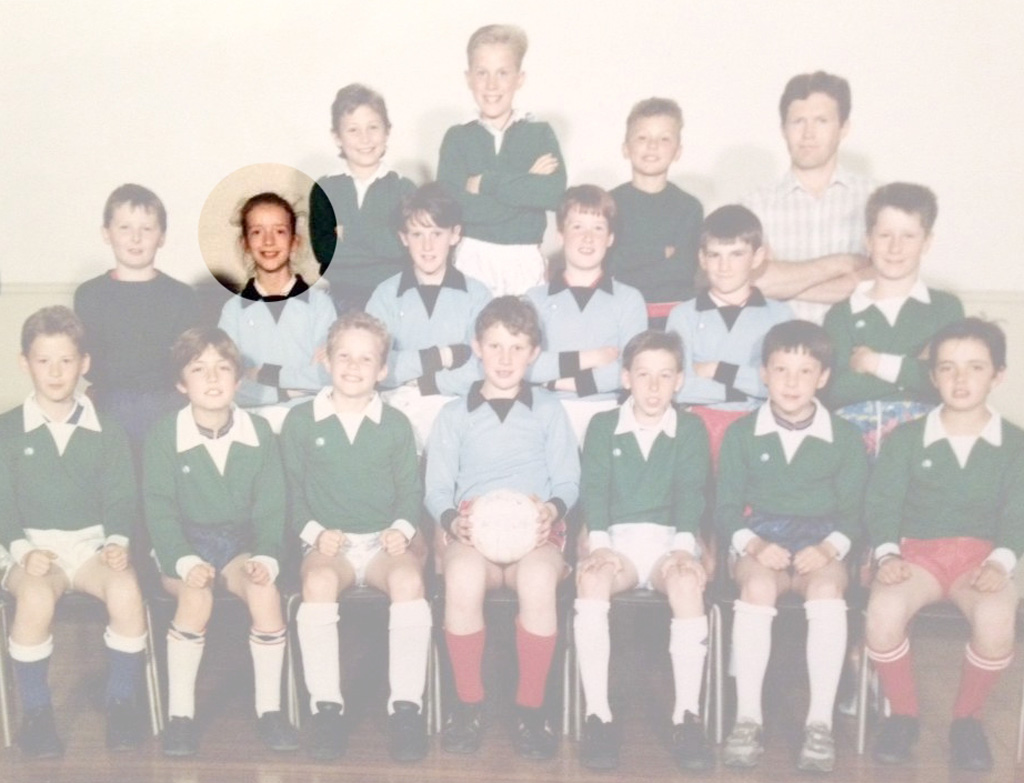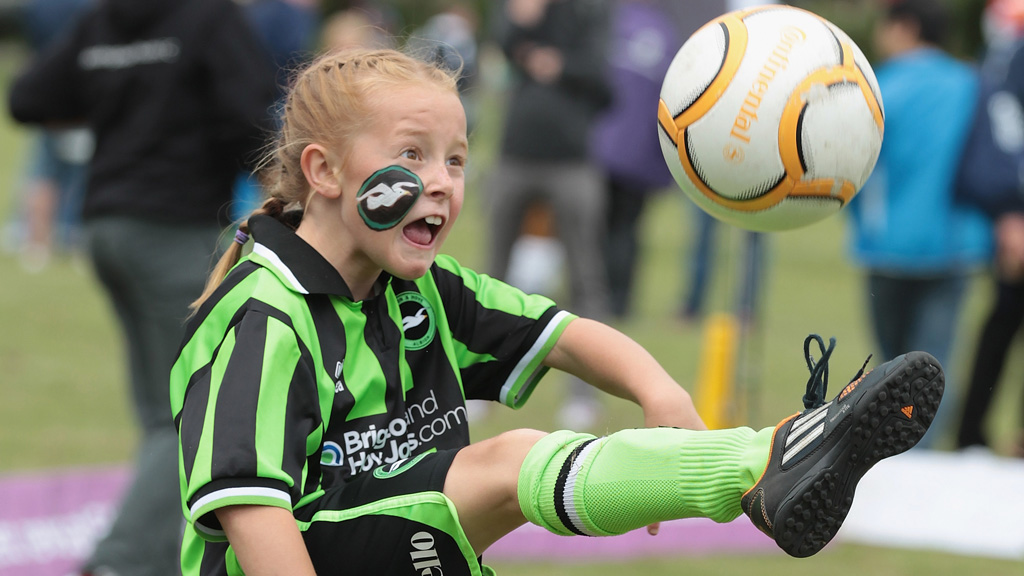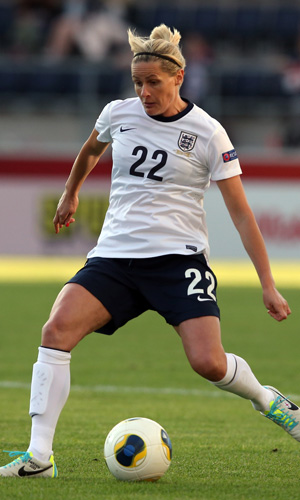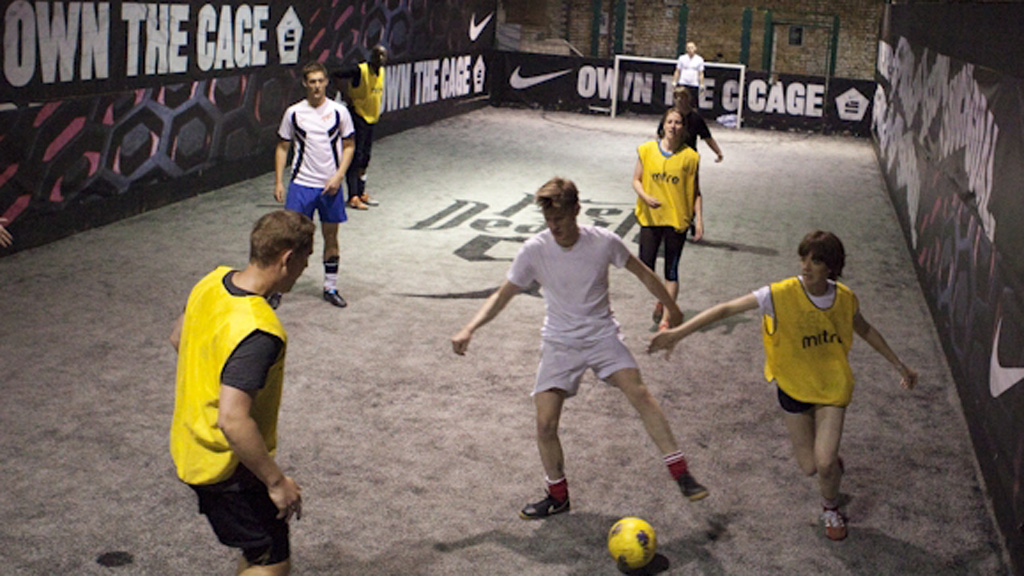Girls on side – will there ever be a female Beckham?
We all grow up playing football in the park but it’s not always been easy for girls, writes Anna Doble, head of online at Channel 4 News, and junior school left winger.

You may have noticed a major football tournament is currently taking place – that’s right, the Women’s European Football Championships in Sweden. Otherwise known as the women’s Euros.
Tonight England play a crunch match against France in the group stages. Victory would secure their onward passage to the quarter-finals. So St George’s flags at the ready, fingernails chewed, beers on ice. Right?
Boosted by the Olympics, women’s football has certainly been getting more attention. Even the more negative media coverage – like this – is a sign that women’s football is now on the agenda. It’s on the TV too, which helps.
“This is the most accessible that the Women’s European Championship has ever been which should hopefully bring a brand new audience to the women’s game,” Hope Powell, England team coach, said at the start of the tournament.
Not bad going for a professional sport effectively banned by the Football Association for half a century. So just how accessible is girls and women’s football?
Take a look at this photo from the 1989/90 season. Who’s that girl?

Castle Junior School squad 89/90, Knaresborough, N Yorks. (Picture: Tempest Photography)
It’s me. As a 10-year-old I played football for my school team for two happy seasons.
My brief career on the left wing was made possible by a forward-thinking teacher, encouraging parents, and a nice bunch of boys who made me feel welcome; sometimes even using me to wind up the opposition: “Yeah, she’s a girl. She’s our secret weapon.”
Perhaps my rare left-footedness helped secure a place in the Castle Junior “dream team” (we won, a lot) but a secret weapon I was not: just an average sporty kid who wanted to play football on a Tuesday night. And a girl.
My view was that if you were good enough for the team then all I cared about was winning. Ian Allan
“My only worry back then was that I thought that girls were weaker and when we played in the ‘rougher areas’ you may have got hurt. But I recall standing up for some of the lads now more than you,” says Ian Allan, the former captain of that team (middle, top).
“It made no odds to me personally that we had a girl in the team. My view was that if you were good enough for the team then all I cared about was winning.”
Of all my memories of school sport, these are the fondest: darting down the left flank of a muddy, slanting pitch, crossing the ball into the box and watching the likes of Ian slot the ball home.
And then came secondary school. Football was simply not an option. Netball and hockey it was for me. I meekly accepted – and never played football “competitively” again.
Grassroots investment
Today there are 5,143 registered girls’ youth teams and 1,437 adult sides in England alone.
Between now and 2017 Sport England is spending £30m on grassroots football with a focus on getting and keeping girls on the pitch. The investment – second only to cycling across 46 sports – is being used by the FA to develop the next generation of female players, with the overall aim of making women’s football the second largest participation sport in the country, overtaking men’s cricket.

A girl kicks a ball during the FA Girl’s Football Festival at Preston Park in Brighton, June 2013. (Getty)
The FA’s “Game Changer” programme, launched last autumn, is developing centres of excellence, elite performance camps and a female coach mentoring scheme. There is also now an annual celebration of girls’ football around the country. Last year nearly 7,000 girls took part in the FA Girls’ Football Festivals – free events which combine music and lifestyle to attract more females to the beautiful game.
So is it working? Official figures show that, despite the massive push, fewer females are playing football on a weekly basis now than in 2005/06 when Sport England began counting. As ever, the English weather gets the blame. But with more women’s football coverage on TV and in the media, the consensus is that the elite game is growing fast and paving the way for aspiring young players.
“British society does not value female sports stars as much as it values the men. But times are changing, certainly since I was a kid,” says former player and sports journalist Jessica Creighton. “There are more opportunities to play, top teams have scholarships to help you study while you play, and women can also now earn a living from playing too.”

Record England goal scorer Kelly Smith. (Getty)
A female Beckham?
“A decade ago it was almost a novelty, whereas now, we as a society are less shocked to see a little girl with pigtails kicking a ball around the park,” Natasha Henry, the brains behind new magazine Women in Sport, told Channel 4 News.
“The girls who struggled to find teams to play with all those years ago, have become the coaches and facilitators of today and because of their own experiences they’re now ensuring that young girls in 2013 do not face the same struggles.”
So will we ever see a female David Beckham?
“If you judge by caps, goals and trophies; then we already have several. But if you deem a superstar to be who has the most commercial deals; then I doubt it,” says Henry.
“It’s absolutely possible,” says Anna Kessel, a sports writer for the Guardian.
“Most fans of the men’s game can name female players – [Brazilian star] Marta and England’s Kelly Smith (pictured).
“You’ve only got to look at tennis to see that women can have that stellar appeal.”
With that, I shall dig out my shin pads and get down to the park. It’s a game of two halves…

Rare appearance – me, right, 34, playing in the Amnesty media football tournament, 2013.




